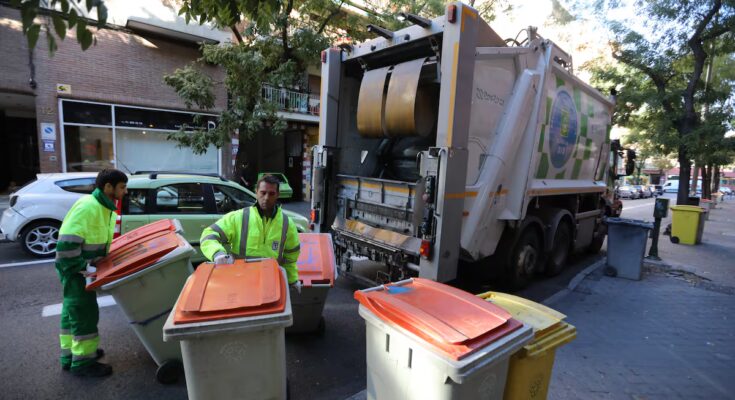The new municipal waste tariff was launched a few months ago and has already made a dent in the Consumer Price Index (CPI) statistics. It is the category that became most expensive in October at an interannual rate, according to the latest data published by the National Institute of Statistics (INE). If general monthly inflation increased, on average, by 3.1% – already the highest increase this year – waste collection increased 10 times more: 30.3%.
It is the second consecutive month in which waste collection has led the price increase, after becoming more expensive in September by the same percentage (30.3%). This year the city councils had to apply the new tax compulsorily and in recent months they have started to collect it. The obligation arises from a 2022 state regulation, which in turn was designed to comply with the European recycling directive. So far this year the average increase has been around 15%.
The indications for designing the new rate, however, have been scarce. Beyond what is contained in the community legislation, which establishes the principle of payment per generation – those who pollute more, pay more – and that the tariff is not deficient – i.e. it covers the costs of providing the service -, the Municipalities have not received specific instructions. The result is a very heterogeneous map, both in terms of calculation methods and prices, which have generally skyrocketed.
The ENT Foundation, involved in the design and implementation of the waste tax, calculated that the amount of the tax would reach 116.32 euros per year for a typical family with a cadastral value of 64,295 euros, two members and 964 kilos of waste produced in a year. However, there is a huge difference between the provincial capitals, which reach a maximum of 230 euros. The highest rate for this standard family unit is paid in Valencia, with 287.5 euros per year, followed by Girona (238 euros) and Tarragona (236.2). The lowest amounts are those of Toledo (56.9 euros), Palencia (57.4) and León (62.5).
For months, the prices of jewelery have also been pushing up, the second product category which increased the most in October (26.8%) compared to the same month last year. Since the middle of last year, month-on-year increases have been consistently above 10%, a trend that largely reflects the rise in prices of commodities such as gold, which has reached all-time highs this year – although it has undergone sharp corrections in recent weeks – as has silver.
Combined passenger transport, which includes a combination of means of transport, was the third most expensive item in the tenth month of the year (26.7%). In this case, the price increase is more recent, and coincides with the end of the general discounts that the Executive activated to deal with the inflationary crisis and which the regional governments have expanded. Although several municipalities and municipalities have maintained some sort of bonus, since July their impact on prices has been reduced.
The increase in the price of eggs has been less pronounced, although proportionally it touches the pockets of many more consumers. They increased by 22.5% in October, after having chained seven consecutive months of double-digit increases in parallel with the advance of the avian flu epidemic. Paradoxically, the price of poultry meat increased at a much more moderate pace, 3.7%, and much lower than the increase in the price of beef (17.8%) and sheep and goat meat (7.7%).
On the opposite front, the greatest drop was recorded by olive oil (41.6%), which was also one of the products that recorded the greatest price increase after the outbreak of the inflationary crisis. Sugar (13.5%) and national tourist packages (-6.4%) follow at a great distance.



